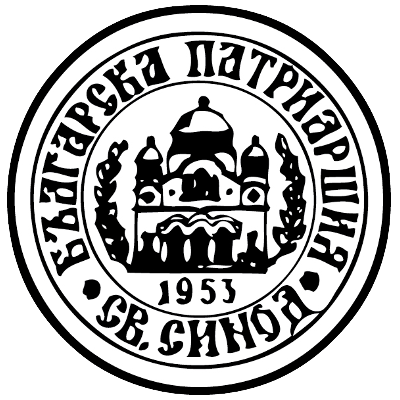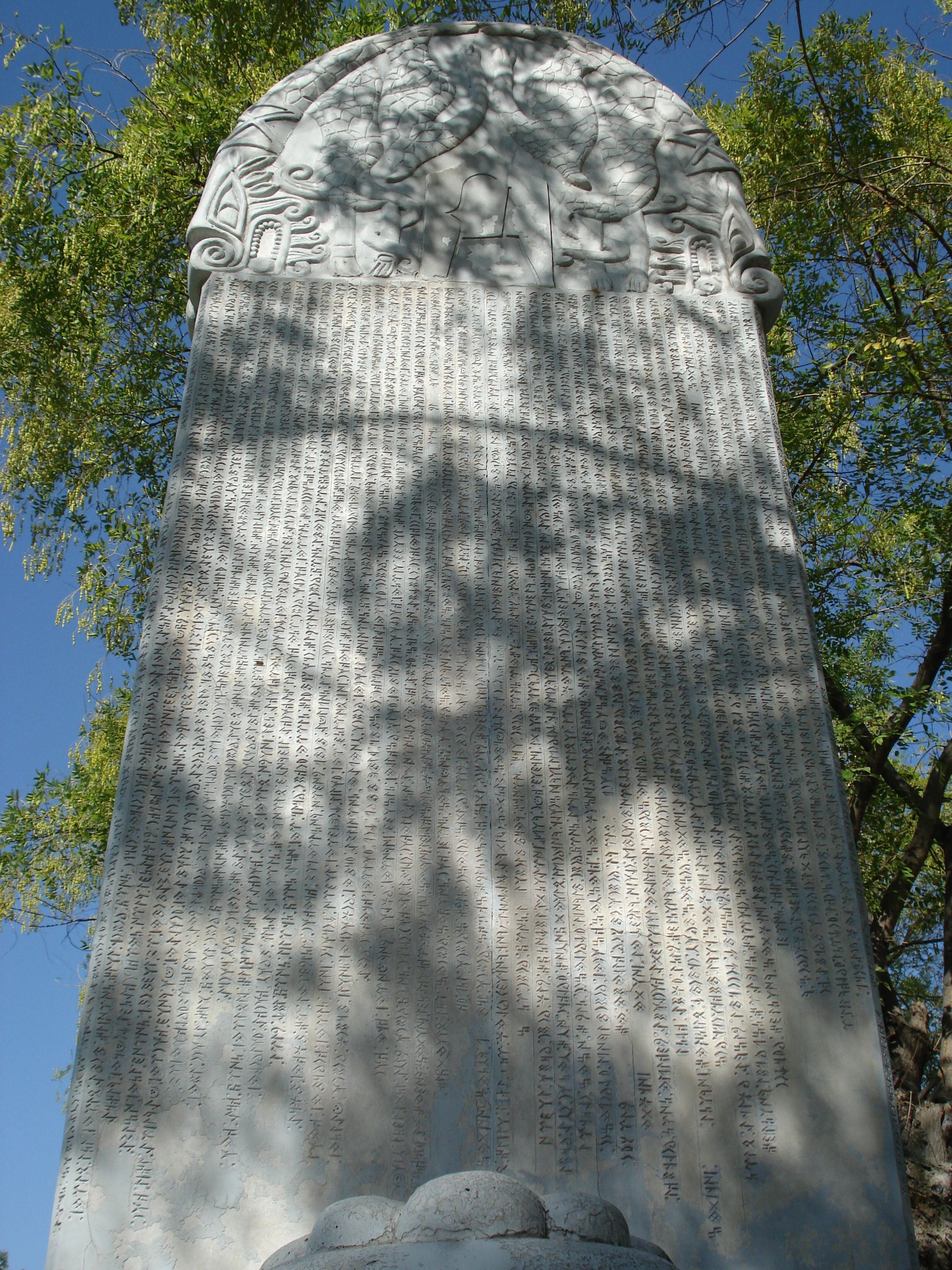|
Chiprovtsi Monastery
Chiprovtsi Monastery ( bg, Чипровски манастир, ''Chiprovski manastir'') is a Bulgarian Orthodox monastery 5 kilometres northeast of the town of Chiprovtsi in Montana Province in northwestern Bulgaria. It belongs to the diocese of Vidin and lies in the valley of the Ogosta river. According to Petar Bogdan, the monastery was built in the 10th century and remained a religious and cultural centre despite Tatars, Tatar and Magyars, Magyar raids in the 13th century, the Ottoman Empire, Ottoman invasion in the 14th century and Michael the Brave's raids in the 16th century. The monastery has been razed six times, in 1412, 1688, 1806, 1828, 1837 and 1876, with the one of 1688 after the Chiprovtsi Uprising being particularly devastating. The current monastery church was built in 1829. The Chiprovtsi Monastery consists of a church dedicated to Saint John of Rila, residential buildings, a small graveyard and a three-storey tower featuring an ossuary, a chapel and a belfry. Re ... [...More Info...] [...Related Items...] OR: [Wikipedia] [Google] [Baidu] |
Ottoman Empire
The Ottoman Empire, * ; is an archaic version. The definite article forms and were synonymous * and el, Оθωμανική Αυτοκρατορία, Othōmanikē Avtokratoria, label=none * info page on book at Martin Luther University) // CITED: p. 36 (PDF p. 38/338) also known as the Turkish Empire, was an empire that controlled much of Southeast Europe, Western Asia, and North Africa, Northern Africa between the 14th and early 20th centuries. It was founded at the end of the 13th century in northwestern Anatolia in the town of Söğüt (modern-day Bilecik Province) by the Turkoman (ethnonym), Turkoman tribal leader Osman I. After 1354, the Ottomans crossed into Europe and, with the Ottoman wars in Europe, conquest of the Balkans, the Ottoman Anatolian beyliks, beylik was transformed into a transcontinental empire. The Ottomans ended the Byzantine Empire with the Fall of Constantinople, conquest of Constantinople in 1453 by Mehmed the Conqueror. Under the reign of Sule ... [...More Info...] [...Related Items...] OR: [Wikipedia] [Google] [Baidu] |
Balkan Mountains
The Balkan mountain range (, , known locally also as Stara planina) is a mountain range in the eastern part of the Balkan Peninsula in Southeastern Europe. The range is conventionally taken to begin at the peak of Vrashka Chuka on the border between Bulgaria and Serbia. It then runs for about , first in a south-easterly direction along the border, then eastward across Bulgaria, forming a natural barrier between the northern and southern halves of the country, before finally reaching the Black Sea at Cape Emine. The mountains reach their highest point with Botev Peak at . In much of the central and eastern sections, the summit forms the watershed between the drainage basins of the Black Sea and the Aegean. A prominent gap in the mountains is formed by the sometimes narrow Iskar Gorge, a few miles north of the Bulgarian capital, Sofia. The karst relief determines the large number of caves, including Magura, featuring the most important and extended European post-Palaeolithic ... [...More Info...] [...Related Items...] OR: [Wikipedia] [Google] [Baidu] |
Bulgarian Orthodox Monasteries
Bulgarian may refer to: * Something of, from, or related to the country of Bulgaria * Bulgarians, a South Slavic ethnic group * Bulgarian language, a Slavic language * Bulgarian alphabet * A citizen of Bulgaria, see Demographics of Bulgaria * Bulgarian culture * Bulgarian cuisine, a representative of the cuisine of Southeastern Europe See also * * List of Bulgarians, include * Bulgarian name, names of Bulgarians * Bulgarian umbrella, an umbrella with a hidden pneumatic mechanism * Bulgar (other) * Bulgarian-Serbian War (other) The term Bulgarian-Serbian War or Serbian-Bulgarian War may refer to: * Bulgarian-Serbian War (839-842) * Bulgarian-Serbian War (853) * Bulgarian-Serbian wars (917-924) * Bulgarian-Serbian War (1330) * Bulgarian-Serbian War (1885) * Bulgarian-Serbi ... {{disambiguation Language and nationality disambiguation pages ... [...More Info...] [...Related Items...] OR: [Wikipedia] [Google] [Baidu] |
Christian Monasteries In Bulgaria
Christians () are people who follow or adhere to Christianity, a monotheistic Abrahamic religion based on the life and teachings of Jesus Christ. The words ''Christ'' and ''Christian'' derive from the Koine Greek title ''Christós'' (Χριστός), a translation of the Biblical Hebrew term '' mashiach'' (מָשִׁיחַ) (usually rendered as ''messiah'' in English). While there are diverse interpretations of Christianity which sometimes conflict, they are united in believing that Jesus has a unique significance. The term ''Christian'' used as an adjective is descriptive of anything associated with Christianity or Christian churches, or in a proverbial sense "all that is noble, and good, and Christ-like." It does not have a meaning of 'of Christ' or 'related or pertaining to Christ'. According to a 2011 Pew Research Center survey, there were 2.2 billion Christians around the world in 2010, up from about 600 million in 1910. Today, about 37% of all Christians live in the A ... [...More Info...] [...Related Items...] OR: [Wikipedia] [Google] [Baidu] |
John Of Rila
Saint John of Rila, a.k.a. Ivan of Rila ( Bulgarian: Свети преподобни Йоан Рилски Чудотворец, Svеti prеpodobni Yoan Rilski Chudotvorеts; English: Saint (monk) John of Rila the Wondermaker) (876 – c. 946) was the first Bulgarian hermit. He was revered as a saint while he was still alive. The legend surrounding him tells of wild animals that freely came up to him and birds that landed in his hands. His followers founded many churches in his honor, including the famous Rila Monastery. One of these churches, Saint John of Rila was only discovered in 2008 in the town of Veliko Tarnovo. Today, he is honored as the patron saint of the Bulgarians and as one of the most important saints in the Bulgarian Orthodox Church. Life Saint John of Rila was born app. 876 a.c. in Skrino, at the foot of the Osogovo mountain (close to the modern city of Dupnitsa). He was a contemporary of the reign of emperor and saint Boris I, his sons Vladimir (Rassa ... [...More Info...] [...Related Items...] OR: [Wikipedia] [Google] [Baidu] |
Michael The Brave
Michael the Brave ( ro, Mihai Viteazul or ; 1558 – 9 August 1601), born as Mihai Pătrașcu, was the Prince of Wallachia (as Michael II, 1593 – 1601), Prince of Moldavia (1600) and ''de facto'' ruler of Transylvania (1599 – 1600). He is considered one of Romania's greatest national heroes. Since the 19th century, Michael the Brave has been regarded by Romanian nationalists as a symbol of Romanian unity, as his reign marked the first time all principalities inhabited by Romanians were under the same ruler. His rule over Wallachia began in the autumn of 1593. Two years later, war with the Ottomans began, a conflict in which the Prince fought the Battle of Călugăreni, resulting in a victory against an army nearly three times the size of the army of Michael the Brave, considered one of the most important battles of his reign. Although the Wallachians emerged victorious from the battle, Michael was forced to retreat with his troops and wait for aid from his allies, ... [...More Info...] [...Related Items...] OR: [Wikipedia] [Google] [Baidu] |
Magyars
Hungarians, also known as Magyars ( ; hu, magyarok ), are a nation and ethnic group native to Hungary () and historical Hungarian lands who share a common culture, history, ancestry, and language. The Hungarian language belongs to the Uralic language family. There are an estimated 15 million ethnic Hungarians and their descendants worldwide, of whom 9.6 million live in today's Hungary. About 2–3 million Hungarians live in areas that were part of the Kingdom of Hungary before the Treaty of Trianon in 1920 and are now parts of Hungary's seven neighbouring countries, Slovakia, Ukraine, Romania, Serbia, Croatia, Slovenia, and Austria. Significant groups of people with Hungarian ancestry live in various other parts of the world, most of them in the United States, Canada, Germany, France, the United Kingdom, Chile, Brazil, Australia, and Argentina. Hungarians can be divided into several subgroups according to local linguistic and cultural characteristics; subgroups with dist ... [...More Info...] [...Related Items...] OR: [Wikipedia] [Google] [Baidu] |
Bulgarian Orthodox
The Bulgarian Orthodox Church ( bg, Българска православна църква, translit=Balgarska pravoslavna tsarkva), legally the Patriarchate of Bulgaria ( bg, Българска патриаршия, links=no, translit=Balgarska patriarshiya), is an autocephalous Orthodox jurisdiction. It is the oldest Slavic Orthodox church, with some 6 million members in Bulgaria and between 1.5 and 2 million members in a number of European countries, the Americas, Australia, New Zealand and Asia. It was recognized as autocephalous in 1945 by the Ecumenical Patriarchate of Constantinople. History Early Christianity The Bulgarian Orthodox Church has its origin in the flourishing Christian communities and churches set up in the Balkans as early as the first centuries of the Christian era. Christianity was brought to the Balkans by the apostles Paul and Andrew in the 1st century AD, when the first organised Christian communities were formed. By the beginning of the 4th ce ... [...More Info...] [...Related Items...] OR: [Wikipedia] [Google] [Baidu] |
Tatars
The Tatars ()Tatar in the Collins English Dictionary is an umbrella term for different ethnic groups bearing the name "Tatar". Initially, the ethnonym ''Tatar'' possibly referred to the Tatar confederation. That confederation was eventually incorporated into the when unified the various s ... [...More Info...] [...Related Items...] OR: [Wikipedia] [Google] [Baidu] |
Ogosta
The Ogosta ( bg, Огоста , Latin: ''Augusta''), is the largest river in Northwestern Bulgaria, a right tributary of the Danube. It originates at Chiprovska Mountain, 2,168 meters high section of the Western Balkan Mountains, at about an altitude of 1,760 meters, on the border with Serbia. The towns of Chiprovtsi, Montana, and Miziya are situated on the river's banks. The Ogosta river is 147.4 km in length and is fed by 40 tributaries (including the Skat River) in a watershed of 3,157 square kilometers. The average water discharge in the lower course of the river is 18 cubic meters per second. Along the river's length there are 14 irrigation systems, 8 hydropower plants, and 13 dams. Although the river is used for domestic consumption, it does suffer from pollution, particularly from nitrates. These come from the use of fertilizers that are not fully used by the plants. Other than that, there were intensive mining activities along the river between 1950 and 1999, and fac ... [...More Info...] [...Related Items...] OR: [Wikipedia] [Google] [Baidu] |





